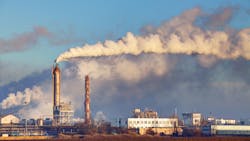Growing Investor Pressure on Emissions Tracking
Over five years pressure from investors to improve supply chain sustainability has grown by 25%, making it the fastest-growing driver of sustainability efforts.
This is according to a new report, 2024 State of Supply Chain Sustainability report, from the MIT Center for Transportation & Logistics (MIT CTL) and the Council of Supply Chain Management Professionals (CSCMP)
“Businesses and consumers alike are putting pressure on us to source and supply products to live up to their social and environmental standards,” said Mark Baxa, CEO of CSCMP, in a statement.
This year’s report is based on four years of international surveys with responses from over 7,000 supply chain professionals representing more than 80 countries.
The report reveals persistent gaps between companies’ sustainability goals and the actual investments required to achieve them.
"Over the past five years, we have seen supply chains face unprecedented global challenges<' said Dr. Josué Velázquez Martínez, MIT CTL research scientist, in a statement. "While companies have made strides, our analysis shows that many are still struggling to align their sustainability ambitions with real progress, particularly when it comes to tackling Scope 3 emissions.
"Scope 3 emissions, which account for the vast majority of a company’s carbon footprint, remain a major hurdle due to the complexity of tracking emissions from indirect supply chain activities. The margin of error of the most common approach to estimate emissions are drastic, which disincentivizes companies to make more sustainable choices at the expense of investing in green alternatives. "
Key findings from the report include:
Lack of Readiness for Net-Zero Goals: Although 67% of firms surveyed do not have a net-zero goal in place, those that do are often unprepared to meet them, especially when it comes to measuring and reducing Scope 3 emissions.
Company Response to Sustainability Efforts in Times of Crisis: Companies react to different types of crises differently in regard to staying on track with their sustainable goals. If it is a network disruption like the COVID-19 pandemic or economic turbulence.
Challenges with Scope 3 Emissions: Despite significant efforts, Scope 3 emissions—which can account for up to 75% of a company’s total emissions—continue to be the most difficult to track and manage, due to the complexity of supplier networks and inconsistent data-sharing practices.
The report also underscores the importance of technological innovations, such as machine learning, advanced data analytics, and standardization to improve the accuracy of emissions tracking and help firms make data-driven sustainability decisions.
